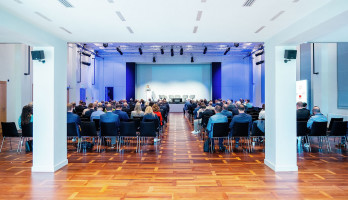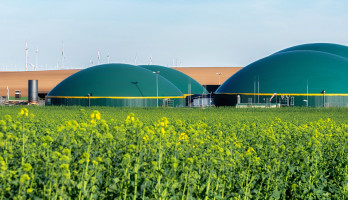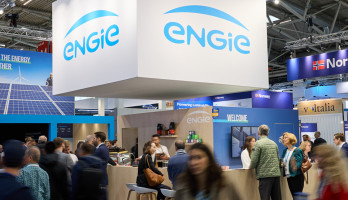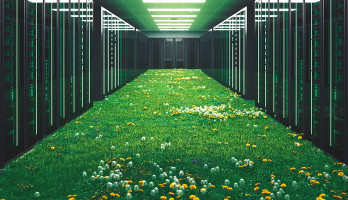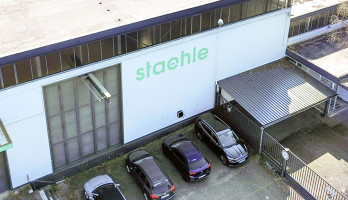
Heat supply in the neighborhood: New possibilities through the GEG
The German government's plans to tackle climate change are ambitious: Among other things, all existing buildings are to be climate-neutral by 2050. Over the next 30 years, therefore, every existing building and every new building must be prepared for this target. But is that even possible? Not every single building and not every property can achieve this goal. It is therefore more helpful to look at several connected buildings as a neighborhood. It is often easier and more economical to find a solution for a group of buildings than for each individual building. Now, for the first time, the new Building Energy Act (GEG) enables neighborhood solutions. In the following, read more about the importance of energy supply in the district and learn what exactly will change as a result of the GEG.
Meaning of neighborhoods and their definition
Planners generally only consider individual buildings. In their work, they optimize the energy and climate balance of individual houses through efficient building shells and modern building technology. When they focus on the individual building, however, they often reach the limits of optimization, whether for reasons of economic efficiency or historic preservation. It can therefore be more effective to consider and optimize the energy balance of an ensemble of several buildings. Buildings are not alone in an urban environment. They always work in relation to each other and to their surroundings. Therefore, the social and cultural aspects of the neighborhood play a major role for residents and owners. There is no uniform definition of a neighborhood. However, the description from the KfW leaflet for the energetic urban redevelopment can be used for this purpose:
- Neighborhoods are made up of several buildings, which are connected in terms of area, including the public infrastructure.
- They are smaller than a district and are more like a quarter.
Concepts for the energy supply in the neighborhood
Compared to the consideration of individual buildings, additional energy concepts can be implemented for a neighborhood. For example, these may be local heating solutions that are often more efficient and more economical than individual heating systems for each building. The neighborhood can thus help to achieve ambitious targets for reducing CO2 emissions. Another positive effect in the neighborhood is the opportunity to use the interplay of different energy sources and consumers effectively. In this way, intelligent energy management can bring different sectors together. In addition to heating and power supply, it also includes mobility, waste management and other services for a smart city.
What changes with the new GEG for heat supply in neighborhoods?
In the energy assessment of buildings, it was only possible to look at individual buildings. The new Building Energy Act, valid since November 1, 2020, enables planners, builders and owners to agree on a joint supply of heat or cold to several buildings by virtue of § 107. This scheme is limited until December 31, 2025. In this agreement, they may regulate the construction and operation of joint installations for the production, distribution, storage and use of energy using renewable energy or combined heat and power. They can also agree on joint fulfillment for the proportional use of renewable energies for heating and cooling energy requirements. Irrespective of the agreement, each building must still comply with the requirements for total energy requirements. This is to ensure that the regulation does not lead to a deterioration in energy efficiency.
What advantages does the innovation clause in the GEG have for the neighborhood?
Another innovation in the GEG is the so-called innovation clause in § 103. With the help of this clause, greenhouse gas emissions can be limited by an alternative process on an equivalent basis until the end of 2023. Greenhouse gas emissions must be the same for the alternative (technology-free), with the permissible final energy consumption being limited. In addition, after one year, a report with the essential findings must be submitted to the authorities responsible under state law.
Growing importance of the EU Buildings Directive
The energy efficiency of neighborhoods has an additional significance due to the EU Buildings Directive of 2018. There, it is stipulated that the EU will examine findings with integrated quarter and neighborhood approaches when the directive is reviewed in 2026. This will allow neighborhoods to play a greater role in the future – and help the EU to achieve its climate goals.
How are energetic neighborhood concepts promoted?
KfW has suitable funding programs for local authorities, i.e. municipalities, cities and counties that want to invest in the energy efficiency of neighborhoods. For example, they receive a grant of 65 percent of the eligible costs in the KfW program Energetic Urban Rehabilitation (432) for the preparation of energy-related neighborhood concepts. This concept includes analyses of the current state as well as the potential for savings and the targets for the energy balance after the refurbishment. Under the "IKK - Energetic Urban Rehabilitation – Neighborhood Supply" program, local authorities receive a grant for investments to improve the energy efficiency of municipal heating, cooling, water and wastewater systems in the district. 100 percent financing is possible through this program. In addition, they receive a ten percent repayment bonus. Eligible measures include, for example, the local use of industrial waste heat, the construction and use of decentralized heat storage systems and heating and cooling networks.
The importance of the energy supply in the neighborhood for "zero carbon" is growing
It is worthwhile to survey building ensembles instead of individual buildings: In addition to the social and cultural aspects, a neighborhood also has advantages when it comes to energy efficiency. A common heat and cooling supply can be significantly more efficient and economical than one for every single property in the neighborhood. The new GEG now really brings to bear the importance of neighborhoods in energy supply, and this importance will increase noticeably in the future. The Building Energy Act is therefore a significant milestone on the way to the important milestone goal of 2050: a climate-neutral building stock.
Our Expert

